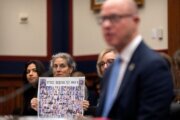WASHINGTON – It may not look like it when you head out on the road, but drivers across the Washington metropolitan region are getting in their cars less and logging fewer miles.
The decrease in miles driven by the region’s car owners reverses a decades-old trend for more drivers to log more miles each year. And the drop comes even as the region’s population has increased.
Between 2005 and 2011, the region’s population grew to 5.1 million people, an increase of 350,000 people. But the number of miles driven by the people who live here has declined more than one mile per day during that same time period, according to data released by the Metropolitan Washington Council of Governments Wednesday.
Council of Government’s Ron Kirby says the economy could be driving folks to stay home more, live closer to work or telecommute from home. The decrease in miles driven could also reflect the changing lifestyle of younger residents.
“They don’t regard the car as part of their personality any more,” he says of recent college graduates who live in the area. “They don’t drive so much and tend to want to live in places where they can walk and bike.”
| Location | 2005 miles per day | 2011 miles per day | % Change |
|---|---|---|---|
| Regional Core | -5.6 | ||
| Inner Suburbs | -4.5 | ||
| Outer Suburbs | -10.6 | ||
| Average | -6.1 |
But the outer suburbs saw the biggest decline in miles driven. In locations like Frederick and Charles counties in Maryland or Loudoun and Prince William counties in Virginia residents drove about 10.6 percent fewer miles in 2011 compared to 2005.
“Part of it may also be this trend we’ve been noticing of more people tending to live and work in the same jurisdiction,” Kirby says.
There’s also been a drop in the number of miles driven by people who live in the region’s inner core. Arlington, Alexandria and the Distinct of Columbia dropped 5.6 percent to just 15.1 miles per day.
Kirby say the downward trend started before the economy went bad in 2007. But driving has not picked up as the economy has improved. He says there does not seem to be much of a correlation between miles driven and the price of gasoline.
The regional downward trend mirrors a similar trend nationwide. The number of miles driven per person peaked in 2004 nationally and then fell 6.7 percent to just more than 9,400 miles per year by 2012.
Follow @hsilverbergwtop and @WTOP on Twitter.






